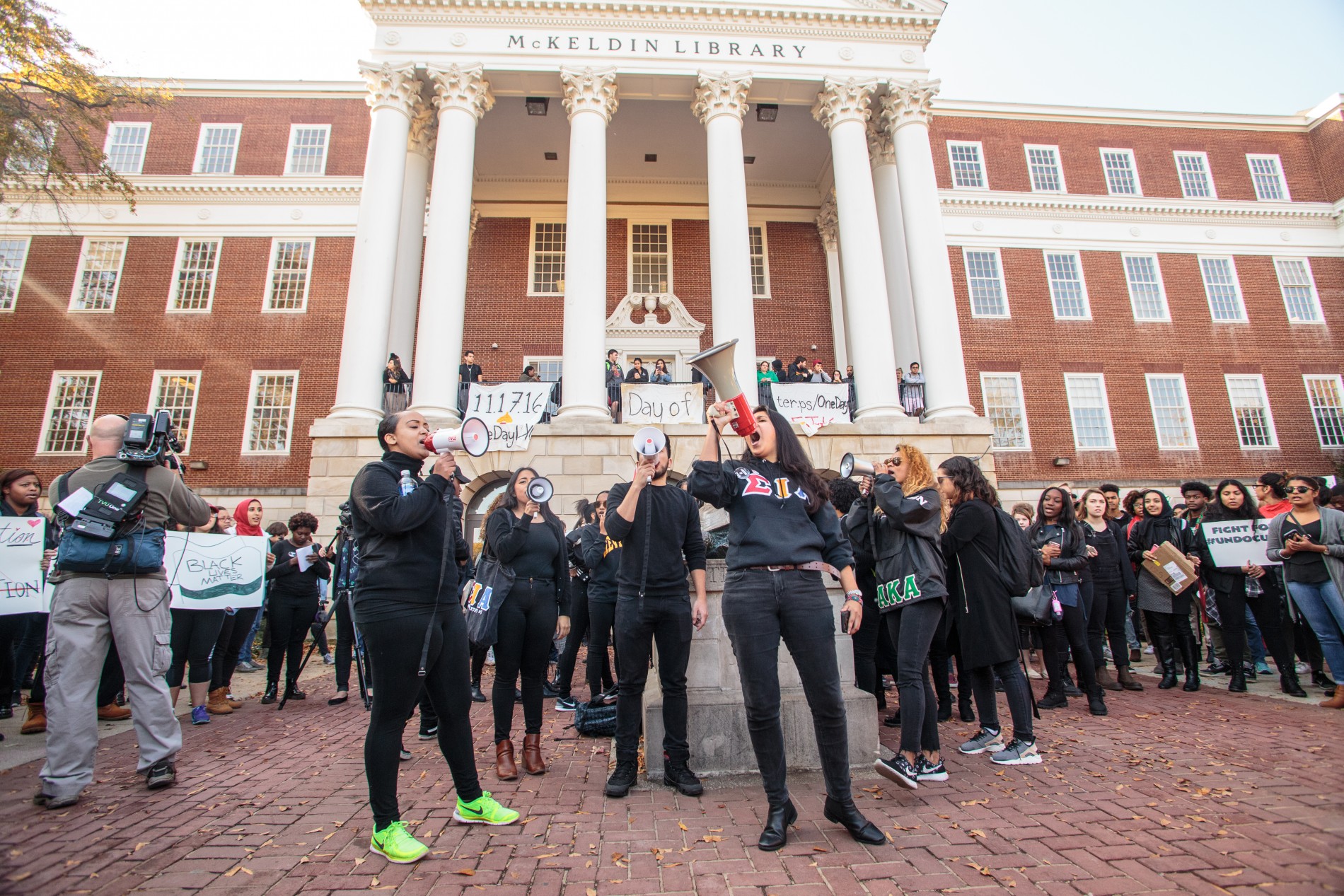Views expressed in opinion columns are the author’s own.
Following university President Wallace Loh’s recent plan to combat racism at the University of Maryland, ProtectUMD called for an expansion to the definition of “hate speech” and demanded harsher punishments for those found responsible for it. Though the coalition’s cause is worthy, ProtectUMD’s suggestions regarding hate speech would be counterproductive to their goal of protecting marginalized groups on the campus.
It can be difficult to regulate hate speech because doing so involves weighing abstract notions of free expression against the concrete suffering of marginalized groups, who are often on the receiving end of that expression. It would be easy for me, coming from a position of privilege, to claim that free speech is of fundamental importance and should be protected at any cost. However, I acknowledge my valuation is shaped by that privilege, and for many the promise “all speech is equal” rings hollow. For this reason and the purposes of this argument, I will assume free expression has no intrinsic value, and speech universally understood to be racist, homophobic or otherwise psychologically abusive is not worth protecting.
Even granting this, statutes prohibiting “hate speech” are inadvisable because they hurt the groups they are designed to protect. In her 1995 article, “Hate Speech and Pornography,” law professor and former American Civil Liberties Union president Nadine Strossen makes this argument. Her two most relevant points are as follows.
1. “Censoring hate speech increases attention to, and sympathy for, bigots.”
2. “It is inevitably enforced disproportionately against speech by and on behalf of minority group members themselves.”
The first argument is clear. Milo Yiannopoulos is famous not just for being an intolerant blowhard but for playing the victim of “snowflake” liberals. Although this characterization is absurd, it is the predominant narrative among his followers. I understand allowing hateful speech on the campus can cause immediate suffering for those it targets, but allowing bigots to claim they are the ones being harmed is even worse.
For example, President Trump rose to power partly on the backs of whites complaining about “PC culture.” Trump fans are wrong about political correctness, but they can vote. When hateful speech is refuted with more speech, it is exposed for the evil that it is. When hateful speech is simply banned, it attracts sympathy. However, there is a distinction between censoring hate speech and actively providing it a platform; in no way should my argument be construed to suggest, for instance, this university should host more white supremacist speakers.
Strossen’s second point is less obvious but no less true. Historically, when regulations prohibiting hate speech are enacted, they are perverted by powerful groups to suppress the speech of marginalized groups. Here are a few examples:
-The British Race Relations Act of 1965, which criminalized intentional incitement of racial hatred, was used to prosecute Black Power leaders, trade unionists, anti-nuclear activists and the Anti-Nazi League.
-The British National Union of Students resolved in the 1970s to prevent members of “openly racist/fascist groups” from speaking on the campus, a rule that was later used to disrupt speeches in support of Israel.
-A Canadian anti-hate speech law was used in the 1990s to block the import of black feminist literature and Salman Rushdie’s Satanic Verses.
-In 1989, the ACLU reviewed the University of Michigan hate speech code after a half-year of existence. It found over 20 cases of whites charging blacks with racist speech. Additionally, the only two punishments for racist speech involved speech by black students.
Beyond hate speech ordinances, censorship laws have been employed to curb speech by civil rights activists, feminists and birth control advocates. Police often use the “fighting words” exception to the First Amendment to prosecute people of color for innocuous comments. Marginalized groups are by definition more vulnerable than oppressing groups and, therefore, have more to lose when institutions weaken protections of any right.
Related to this are the problems of definition and implementation. It is difficult to define hate speech narrowly enough to avoid granting the administration frightening latitude in censoring students while still protecting vulnerable students, and broad enough to cover most kinds of hateful speech. The realities of intersectional power dynamics prevent a simple solution like “white people cannot be the victims of hate speech.”
Moreover, even a well-designed rule could be applied in uncomfortable ways. Take, for example, this spring’s Israel Fest and the protests against it. Public statements were made on one side accusing Israel of apartheid while the other branded opponents of Israel as anti-Semitic. Is one of those hate speech? Both? Neither? Under the definition proposed by ProtectUMD — speech “causing demonstrable physical, psychological or emotional harm to students” — I think both sides could have a case.
How, then, can this university best prevent hateful speech? I don’t think there’s an easy answer, but the best counter to speech is more speech. This university should invite more speakers of color, continue to unequivocally denounce hateful speech when it occurs and foster real and meaningful dialogue on the subject. Although I can’t definitively say what “fostering meaningful dialogue” looks like, I do know that meaningful dialogue and censorship are incompatible. ProtectUMD should pursue its other demands, but it should reconsider those regarding hate speech.



